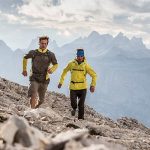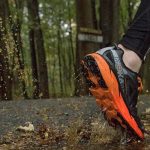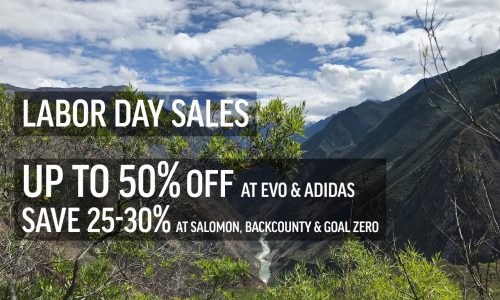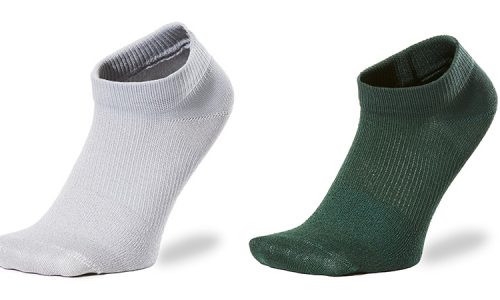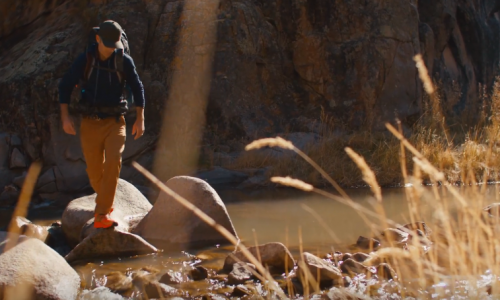Home » Gear Reviews » Running » Running Shoes » Trail Running Shoes » Cushioned & Protective Trail Running Shoes » Hoka One One Rapa Nui 2
Hoka One One Rapa Nui 2 Review
March 9, 2014
 85
85 The Good
- Ample and responsive cushioning
- Surprisingly light
The Bad
- The higher ride takes some getting used to
- No ground feel
- Poor traction on snow and mud
- Agility is reduced by tall stack height
The Rapa Nui 2 offers a smooth responsive ride and long haul comfort, yet manages to weigh the same or less than most of its competition. Despite the amount of cushioning, testers found that the shoe responded well at higher speeds on flatter grades. Runners who prefer more ground feel and precise foot placement will probably have a hard time in this shoe.
Despite the amount of cushioning, testers found that the Rapa Nui 2 responded well at higher speeds on flatter grades. At a hard effort on steep climbs the shoe definitely loses some energy, but this is not really an issue at the slower speeds of a long run or (ultra)marathon. On the other hand it absolutely devours the rough fire roads and descents. Stability of the shoe also is better than one might expect due to the wide ground contact area.
Given the lighter weight of the Rapa Nui relative to other Hoka models and cushioned trail shoes, it could potentially work as a daily trainer for some, especially those who are running high volume and need all the recovery help they can get.
On the other hand, Hokas just don’t appeal to certain runners, particularly those who are used to more performance-oriented choices. Runners who prefer more ground feel and precise foot placement will probably have a hard time in this shoe.
Comfort & Protection
Comfort is the main selling point of the Hoka and, as one would expect, it is its strongest attribute. The midsole foam is extremely forgiving underfoot, but also has some firmness so it isn’t necessarily plush like the heaver Hoka models. Push through protection is obviously about as good as it can get. The upper also is fairly comfortable—albeit a little stiff—with the seamless construction and welded overlays. Compared to other shoes in this category the upper does not protect quite as well against impact, but it’s still likely to be more than adequate for all but the nastiest trail conditions.
Security of fit
Testers were a bit mixed on foot security. The shoe definitely seemed to provide a more natural fit for runners with average to above average fit, but on the other hand the toe box is somewhat narrow. More eyelets would allow for finer tuning.
Speed & Energy Efficiency
The Rapa Nui has a wonderfully smooth ride, which is likely the result of the mild rocker profile, energy response, and excellent balance. The stack height definitely takes some getting used to, and the 5-mm heel-to-toe drop is too low to give that “cockpit” feeling present with racier shoes.
Still, cruising at medium to high speeds on flatter grades is nearly effortless in the Rapa Nui. That definitely seems to be the sweet spot. But even at slower speeds the energy return from the shoe during compression is fairly obvious. In this respect it performs more like a cushioned but responsive road flat than a typical trail plodder.
The Rapa Nui is less responsive in bending and rotational modes, which manifests as energy loss on steep climbs. The sheer thickness of the midsole helps, but still falls short of providing actual energy return in the way that a stiffer shoe would. This could lead to increased calf fatigue on longer runs with lots of climbing.
Agility and Traction
There’s no getting around the fact that a midsole this thick is harder to manipulate, and that translates to less precise foot placement.
Furthermore, even though the Rapa Nui is fairly stable, that stability comes from a wider ground contact area and ankle/lower leg forces that counter the rotation of the upper foot about the medial and lateral edges of the shoe (mostly lateral). This is different from a shoe that doesn’t rotate at all due to a lower profile ride and torsional stiffness, and definitely requires more adjustment on the part of the runner.
At slower paces more typical of ultramarathons however this is going to be less of an issue, except potentially late in a long race when the runner is in a fatigued state. Traction was adequate on dry surfaces but poor on snow and mud.
Value
The MRSP of $130 is a bit on the high-end for a cushioned trail runner, but still a good 25-percent less than other Hoka models.










